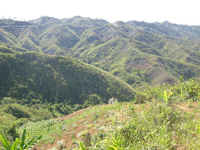 ENERGY ENERGY |
High-energy costs partly handicap the industrial sector, even though it is said that the Jirama rates are among the lowest in Sub-Saharan Africa. If operators as a whole complain about the regular tariff increase, those in the countryside complain about the rates applied to them according to the location of their plant in one or another province. Approved by the World Bank, Jirama's electricity rates are divided into three zones: hydro-power for those provinces that can rely on hydro-power stations, heavy fuel for thermal power stations and finally diesel for hydroelectric power stations. These last ones pay electricity at double the price of the first ones. This situation generates tensions among the different companies of the same sector. In 1994, the Textile Company of Mahajanga complained of being at disadvantage vis-à-vis its competitor, the Cotton Company of Antsirabe that enjoys lower energy prices. Until now the government refused to level the prices as per the request of the investors located in the provinces.

Another issue will soon arise in connection with the production capacity of the national company. Soon or later, Jirama will no longer be able to supply with water and electricity the increasing demand from households and large consumers such as the factories. That is the reason why most industrial businessmen want to increase competition and call for new investors to enter the market in order to deliver a better service. Actually, the State is not willing to privatize Jirama by yielding its assets.
| The State argues that the institution is still necessary because a private company, only looking at profitability, would not worry as to supply as many people as possible with water and electricity. Up to now around 13.7% of households use electricity for lighting purposes even though since1998 35,000 new households have been connected.
Three out of four Malagasy do not have access to drinking water. If the servicing rate is 83% in the cities, in rural areas, where more than 75% of the population is concentrated, it is a mere 13%. A number of programs have been set with the support of international organizations such as the World Bank, UNICEF, UNDP, ADB, ABEDA and bilateral partners such as France and Japan - especially as far as supplying pure and drinking water to rural areas and particularly in the South where its is a scarce commodity. A bucket of water is sold FMG 150 (0.2 USD). The scarce rains that only fall a few weeks a year remain the only natural source of supply. The Japanese government has just released funds for USD 2.7 million for the utilization of underground waters in the Southwest. Desalinization of seawater is presently being studied in order to solve this scarcity of drinking water. In the whole territory the National Authority of Waters and Purification (Autorité Nationale de l'Eau et de l'Assainissement) will thoroughly manage water resources. |

